El Ray at Dungeness Beach by Simon Conder Associates
Our second project this week from British studio Simon Conder Associates is a timber-clad house built around a nineteenth-century railway carriage on Dungeness beach in Kent, England.
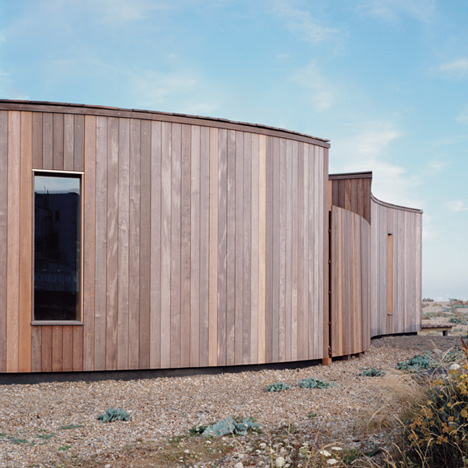
Simon Conder Associates designed El Ray beach house as the summer home for a family, who had previously lived in just the old carriage.
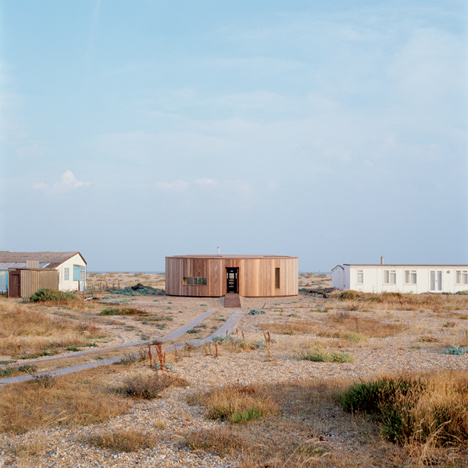
"We were asked by our clients to increase the accommodation area by approximately 50 percent and dramatically improve the environmental performance of the house," said Simon Conder.
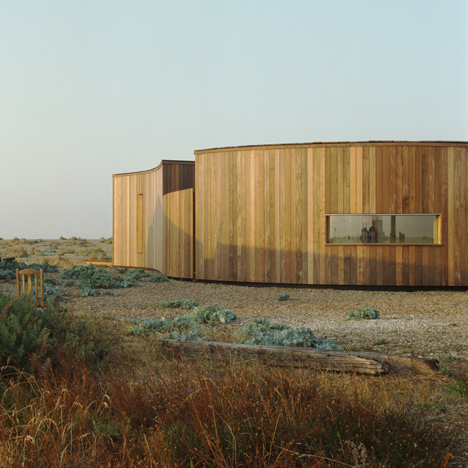
Completed in 2008, the house is located between two other shacks near the Dungeness power station. It features a bell-shaped plan, incorporating a sheltered front terrace and a pair of recessed courtyards that are protected from the prevailing winds.
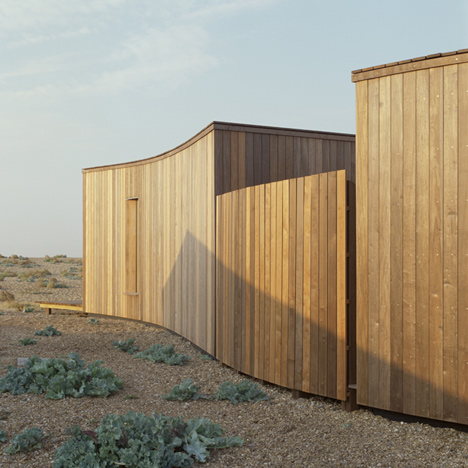
The railway carriage is contained at the centre of house and accommodates a kitchen within its worn shell. A living room surrounds and opens out to all three terraces.
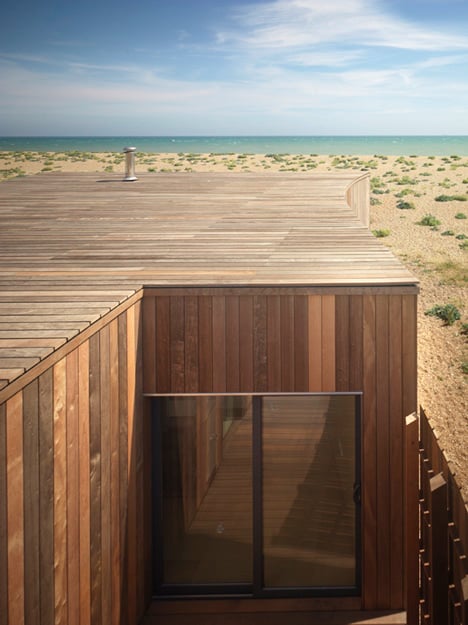
Different tones give a striped pattern to the hardwood exterior cladding. There are also ramps leading into the house from the surface of the beach.
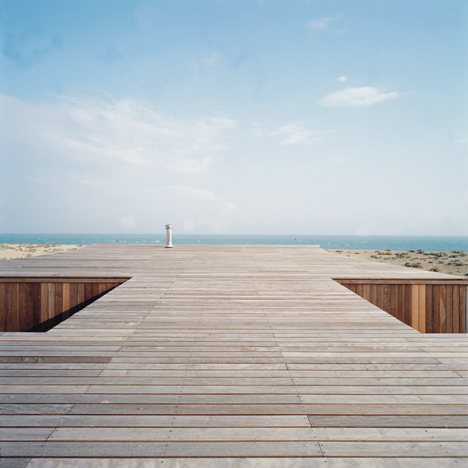
A flat sloping roof acts as an observation deck with sweeping 360-degree views of the surrounding beach and ocean.
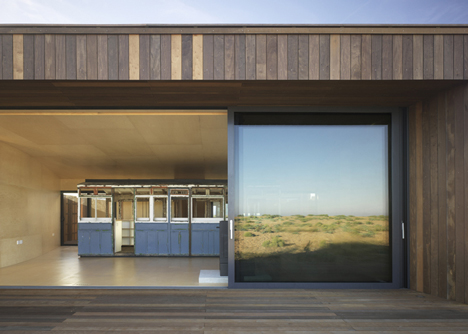
The walls, roof and floor are insulated using recycled newspaper, meaning very little energy is needed for heating, lights and ventilation.
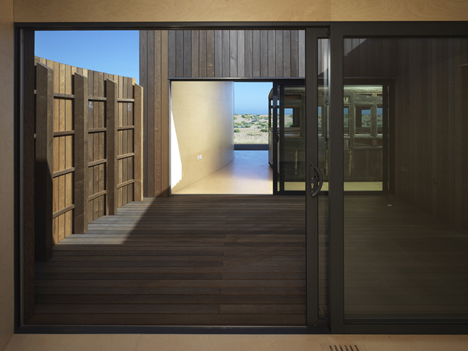
In extremely cold weather, electric heating is powered by a rooftop wind turbine to heat beneath the floorboards in the two bedrooms and bathroom.
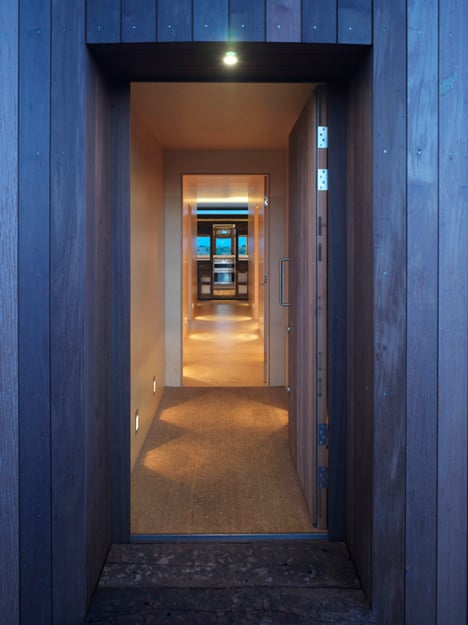
Simon Conder more recently completed a pair of timber-clad houses built on a steep hill in the town Porthtowan.
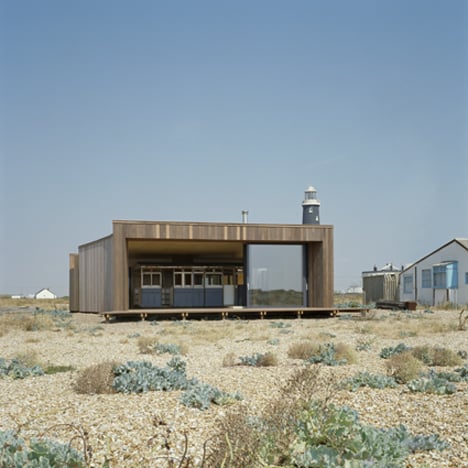
Other seaside houses in the UK include a shingle-clad house elsewhere on Dungeness beach, a small wooden house on the tip of the Isle of Skye and an experimental beach house at Maldon. See more British houses »
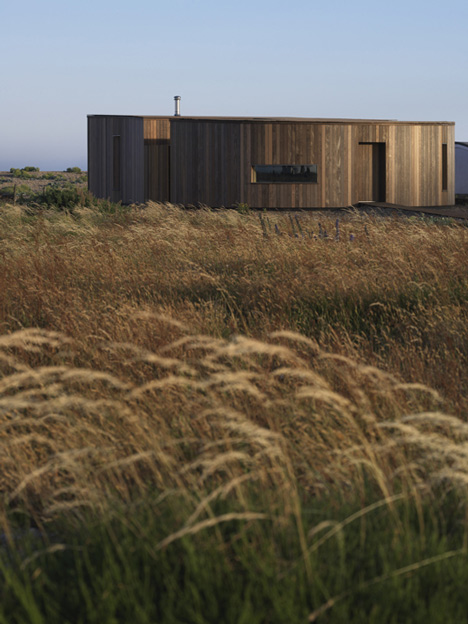
Here's a project description from the architects:
El Ray, Dungeness Beach, Kent
Dungeness beach is a classic example of ‘Non-Plan’ and the houses that populate the beach have developed through improvisation and bodge. This scheme develops this tradition in a way that responds to the drama and harshness of the landscape.
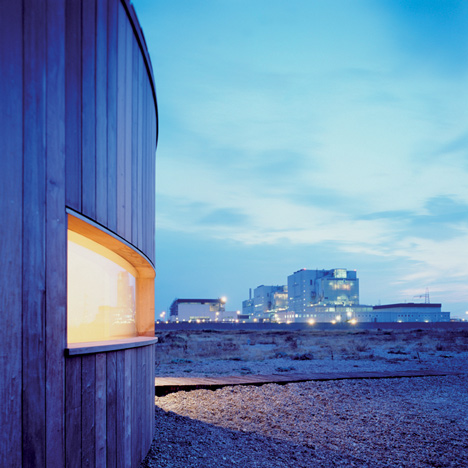
El Ray is part of a group of five beach houses located immediately to the east of the huge Dungeness A power station. The original house consisted of a 19th century railway carriage with flimsy lean tos to the north and south. It was in extremely poor condition and too small to accommodate our clients and their growing family. We were asked by our clients to increase the accommodation area by approximately 50%, and dramatically improve the environmental performance of the house.
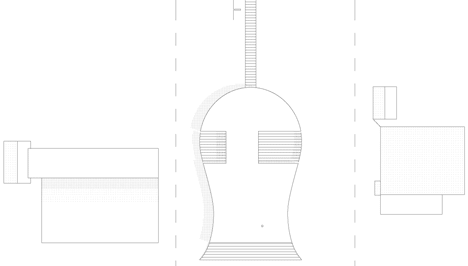
The new house incorporates the old railway carriage inside a highly insulated timber structure. The carriage forms the centre point of the main living area and accommodates the kitchen. A fully glazed southern elevation gives views out over the channel and a series of smaller slot windows on the other elevations give focused views of the adjacent lighthouse, coastguard station and nuclear power station.
The sloping roof deck acts as an observation platform with extraordinary 360 degree views of the beach and the sea. The plan incorporates two courtyards to provide shelter from the constant wind.
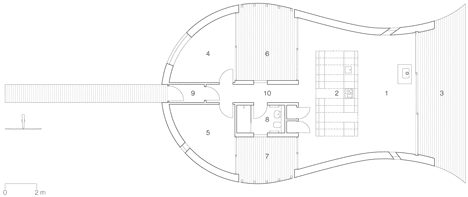
Environmental Performance
Environmental control is achieved through a combination of super insulation, passive solar gain, cross ventilation and a wind turbine.

The high levels of insulation in the walls, roof and floor ensure that heat loss from the building is minimal and very little energy is required for heating, lighting and ventilation. External glazing consists of a combination of double-glazed, low ‘E’, argon- filled frameless fixed lights and thermally-broken, aluminium sliding doors. The structural timber frame is constructed from lightweight engineered timber I-Joists, braced inside and out with a sheathing material manufactured entirely from wood waste. The insulation between the I-joists and studs is made from recycled newspaper. The external cladding and decking is made from an FSC certified hardwood called Itauba and the internal wall linings, floors and all joinery are constructed from FSC certified birch plywood.

A canopy projects out over the south deck to shade the living areas from the high summer sun, but allows the low winter sun to warm the house. When necessary a wood-burning stove, using drift wood from the beach, is used to supplement the passive solar gain in the winter months and in extremely cold conditions electric under floor heating, powered by the wind turbine, will heat the two bedrooms and the bathroom.

It is anticipated that the during the year the wind turbine will generate more electricity than the house will consume, meaning that the house can be run at carbon negative. The client intends to sell any surplus electricity generated by the wind turbine back to the National Grid.

Architects: Simon Conder Associates
Design Team: Simon Conder, Pippa Smith
Structural Engineer: Fluid Structures
Environmental Engineer: ZEF
Contractor: Ecolibrium Solutions
Construction cost per m2: £1,780.00
Completed: July 2008